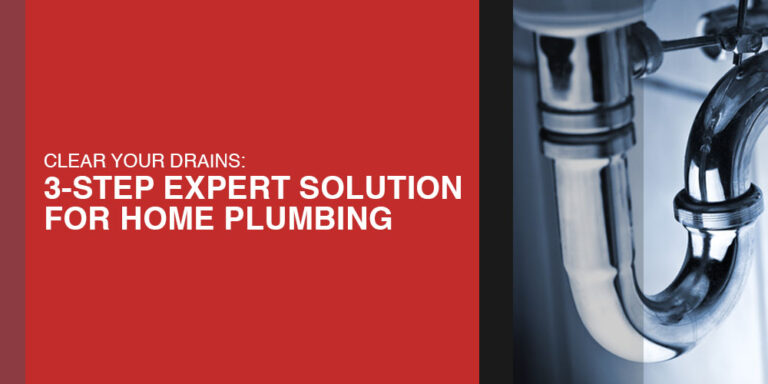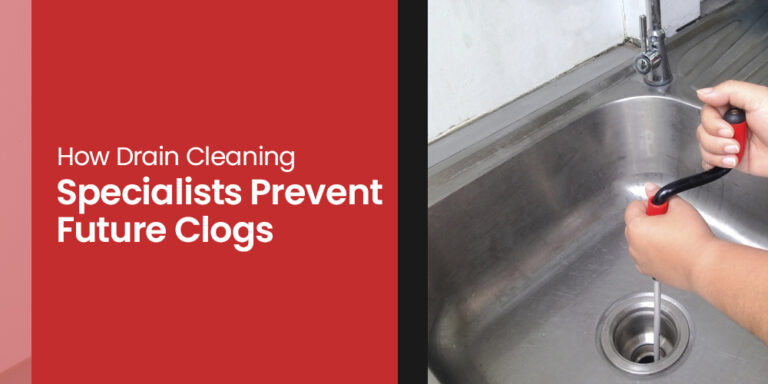Effortless Home Sewer Line Repair in 5 Strategic Steps
Are you aware of the warning signs that your sewing line needs attention? Maintaining your home sewer line can help maintain the health and safety of your household. A well-functioning one ensures that waste is correctly removed from your home, thus safeguarding against health hazards and expensive repairs.
But how do you know when your sewer line needs attention? While “effortless” home sewer line repair might sound ambitious, a strategic approach can simplify the process significantly. Let us learn the following five strategic steps:

Step 1: Identification and Diagnosis
Accurate diagnosis ensures that you address the very cause of the issue instead of just treating the symptoms. Understanding the nature and extent of the problem will direct you in choosing the appropriate repair method, thereby, also preventing unnecessary expenses. Start by doing the following:
- Check for slow drains: If multiple fixtures are draining slowly, this could signify a blockage in the main sewer line.
- Listen for gurgling noises: Gurgling sounds from your toilet or drains indicate a sewer line issue.
- Sniff for foul odors: Unpleasant smells around your home, particularly in the basement or yard, might indicate a sewer line problem.
When these signs appear, it’s time to call in professional plumbers. Technicians can use advanced technology, such as camera inspections, to specify the exact location and nature of the problem. This accurate diagnosis is critical to choosing the correct repair method and avoiding unnecessary work.

Step 2: Choosing the Right Repair Method
Opting for the proper repair method for your home sewer line can achieve a lasting and effective solution. Thus, understanding the options available will help you make an informed decision and gain the most effective and efficient repair. You could consider the following:
Traditional Excavation:
- Pros: Highly effective for severe damage, such as collapsed pipes.
- Cons: Invasive and disruptive, requiring digging up the yard or driveway.
Trenchless Repair Methods:
- Pipe Bursting: This involves breaking the old pipe apart while pulling a new one into place. It’s less invasive and can be more cost-effective.
- Pipe Lining: A resin-coated liner is inserted into the existing pipe and inflated, creating a new pipe within the old one. This method is also minimally invasive and ideal for cracked or leaking pipes but not severely damaged.
In light of this, it’s essential not to overlook the importance of matching the repair method to the specific problem, soil conditions, and your budget. This thoughtful alignment ensures that the repair process effectively solves the problem efficiently, minimizing unnecessary expenses and disruptions.

Step 3: Preparing for Repair
Preparation is vital to a smooth repair process. This ensures that everything is up for a smooth repair process. Before starting, homeowners should:
- Secure necessary permits: Check with local heads to ensure all required permits are in place.
- Prepare the work area: Clear the area around the sewer line and protect nearby structures or landscaping.
- Arrange for temporary water usage solutions: Plan alternative water sources or storage to prepare for an interruption of water service.

Step 4: Executing the Repair
Whether tackling a DIY fix or overseeing professional work, understanding the repair process can help manage expectations. Take a closer look at what each method involves:
Traditional Excavation Process:
- Excavation: The damaged section of the pipe is located and dug up.
- Replacement: The contractor removes the old pipe and replaces it with a new one.
- Backfilling: Workers fill in the trench and restore the area.
Trenchless Repair Process:
- Pipe Bursting: Technicians pull a new pipe through the old one, breaking it apart and replacing it simultaneously.
- Pipe Lining: Technicians insert a resin-coated liner into the old pipe, inflate it, and allow it to harden, forming a new pipe within the old one.
Each method has its advantages regarding time, disruption, and effectiveness. Trenchless methods are generally quicker and less invasive, but traditional excavation might be necessary for severe damage.

Step 5: Post Repair Best Practices
After the repair, it’s essential to ensure the integrity of the fix and take proactive steps to prevent future issues. The following recommendations can help you retain a healthy sewer line and avoid recurring problems:
Post-Repair Inspections:
- Professional inspections: Have a professional inspect the repair to ensure it was done correctly.
- Regular maintenance: Schedule regular inspections to catch potential issues early.
Long-Term Maintenance Tips:
- Avoid flushing non-degradable items: Items like feminine hygiene products, wipes, and paper towels can clog the sewer line.
- Monitor tree roots: Roots can infiltrate sewer lines, so keep an eye on trees near your sewer line.
- Use drain screens: These can prevent debris from entering the sewer line.
By following these best practices, you can maintain a healthy sewer line and avoid future problems. These steps will ensure that your sewer line continues functioning correctly and protect your home from potential hazards.

Empowering Homeowners to Take Control
In summary, achieving effortless home sewer line repair is possible with a strategic and informed approach. By staying proactive, making well-informed decisions, and following best practices throughout the process, homeowners can confidently tackle sewer line issues and maintain their home’s infrastructure.
Remember, timely attention to sewer line problems is crucial. Don’t ignore these issues; address them promptly to keep your home safe and healthy. Taking these measures will ensure a durable and effective solution for those needing home sewer line repair in Bessemer, AL.
References:
- Ruskin, J. H. (1968). A PUBLIC HEALTH APPROACH TO PLUMBING DEFECTS. Journal of Environmental Health, 30(4), 370–378. Retrieved from https://www.jstor.org/stable/26327109
- Tomczak, E., & Zielińska, A. (2017). Example of sewerage system rehabilitation using trenchless technology. Ecological Chemistry and Engineering. S, 24(3), 405–416. https://doi.org/10.1515/eces-2017-0027






